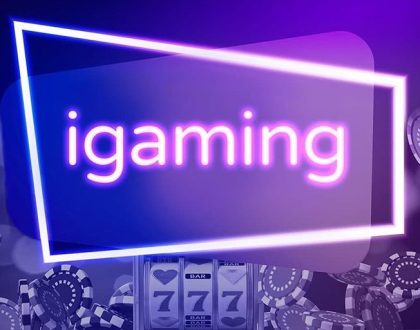The Blurring Lines Between Gaming and Gambling

Many have noticed a concerning trend in the entertainment industry where the distinction between gaming and gambling is becoming increasingly blurred. With the rise of loot boxes, in-game purchases, and online casinos, more and more individuals, including young people, are being exposed to elements that resemble gambling activities within video games. This article aims to explore the impact of this convergence on players and society as a whole.
Historical Context
Evolution of gambling
Context: While the origins of gambling can be traced back to ancient civilizations, it has evolved significantly over the centuries. What started as simple games of chance has transformed into a multi-billion dollar industry that encompasses various forms of betting and wagering.
Milestones in the gaming industry
Evolution: Over the years, the gaming industry has experienced significant milestones that have shaped its current landscape. The introduction of the first commercial casino in Venice in the 17th century marked the beginning of a new era for gambling. Since then, the industry has rapidly expanded to include a wide variety of games and platforms, catering to a diverse audience of players.
Milestones: From the invention of the slot machine in the late 19th century to the rise of online casinos in the 21st century, the gaming industry has continually pushed boundaries and embraced new technologies. These advancements have made gaming more accessible and convenient for players, but they have also raised concerns about the potential risks of gambling addiction and irresponsible behavior. It is imperative for both regulators and industry stakeholders to navigate these challenges responsibly to ensure a safe and enjoyable gaming experience for all.
The Rise of Loot Boxes
Definition and mechanics of loot boxes
An necessary aspect of modern gaming, loot boxes are in-game rewards that can be purchased with real money or earned through gameplay. These virtual containers hold a random assortment of items, from cosmetic skins to powerful weapons, which players can use to enhance their gaming experience. The allure of loot boxes lies in the element of surprise and the potential for obtaining rare or exclusive items, creating a sense of excitement and anticipation among players.
Legal and ethical considerations
The integration of loot boxes into games has sparked debates regarding their legality and ethical implications. Critics argue that loot boxes exhibit similarities to gambling, as players invest money with the hope of obtaining valuable rewards. This has raised concerns about the addictive nature of loot box mechanics, particularly among younger gamers who may be more susceptible to their charms.
The blurred lines between gaming and gambling have prompted regulatory bodies in various countries to scrutinize the use of loot boxes in video games. Some countries have even banned or restricted the sale of games that feature loot boxes to protect consumers from potential harm. It is crucial for game developers to consider the ethical implications of incorporating loot boxes into their products and to ensure that players are adequately informed about the risks involved.
Social Casino Games
Characteristics of social casino games
Not just a pastime, social casino games have become a significant segment of the gaming industry, blurring the lines between gaming and gambling. These games are free to play and do not offer real money rewards, but they simulate the experience of traditional casino games. With engaging graphics, social interactions, and virtual currency, players can experience the thrill of gambling without the financial risk.
Impact on traditional gambling behavior
To understand the impact of social casino games on traditional gambling behavior, it is crucial to recognize their influence on players. Research suggests that social casino games can act as a gateway to real-money gambling for some individuals. The simulated gambling experiences and social interactions in these games can desensitize players to the risks associated with gambling, potentially leading to problem gambling behaviors.
Understanding the potential risks of social casino games is imperative, especially for vulnerable populations such as young adults and individuals with a history of gambling addiction. The lines between entertainment and gambling are becoming increasingly blurred with these games, requiring regulatory measures to protect players from the potential negative consequences.
Economic Implications
Revenue models in gaming and gambling
Economic implications of the blurring lines between gaming and gambling are becoming more evident as both industries continue to intertwine. While gaming traditionally relied on upfront purchases of games or in-game items, the rise of free-to-play models and loot boxes has introduced gambling elements into gaming. This has led to concerns about the impact on players, especially vulnerable populations such as children and individuals with gambling disorders.
The convergence of gaming and gambling revenue models has created a controversial landscape where the distinction between the two becomes increasingly blurred. In-game purchases, loot boxes, and other forms of monetization have become significant sources of revenue for game developers, sometimes surpassing traditional sales. This shift has raised questions about the ethical implications of exploiting addictive tendencies in players to drive profits.
The role of microtransactions
On the economic front, microtransactions play a crucial role in the revenue streams of many games. These small in-game purchases for virtual items or currency have become a lucrative business model for game developers. While microtransactions can enhance the gaming experience by offering additional content, they have also been criticized for promoting a pay-to-win culture and preying on players’ impulse control.
The controversy surrounding microtransactions highlights the delicate balance between providing value to players and maximizing profits. As game developers strive to monetize their products effectively, they must consider the long-term implications of alienating their player base through excessive or exploitative microtransactions.
Psychological Aspects
Similarities in gaming and gambling addiction
Your understanding of the psychological aspects of gaming and gambling reveals striking similarities in addiction behaviors. Both activities can trigger a release of dopamine in the brain, creating a euphoric feeling that reinforces continued behavior. The instant gratification and reward systems present in both gaming and gambling can lead to compulsive behaviors and a loss of control.
The role of game design in player behavior
Similarities between gaming and gambling addiction extend to the design elements that influence player behavior. Game developers use techniques such as variable rewards, social interaction, and progression systems to keep players engaged and coming back for more. These design strategies are carefully engineered to exploit psychological triggers that can lead to addictive behaviors.
Another crucial aspect of the role of game design in player behavior is the use of microtransactions and loot boxes. These in-game purchases can create a sense of urgency and excitement, similar to the rush experienced in gambling. Players may feel compelled to spend more money in pursuit of rare rewards, leading to financial strain and potential addiction.
Regulatory Perspectives
Many countries around the world are grappling with the challenge of regulating the growing convergence of gaming and gambling. As technology and trends evolve, it has become increasingly difficult for regulatory bodies to draw clear lines between these two industries. The blurring of lines has raised concerns about consumer protection, responsible gaming practices, and the prevention of gambling-related harm.
Current Legal Frameworks
With the rise of online gaming platforms and the popularity of in-game purchases, regulators are faced with the task of updating existing laws to address new forms of hybrid entertainment. While some countries have embraced a comprehensive approach to regulating gaming and gambling activities, others are struggling to keep pace with rapidly evolving technologies.
To effectively address the challenges posed by the merging of gaming and gambling, regulatory frameworks need to be flexible yet robust, capable of adapting to emerging trends while upholding consumer protection standards.
International Approaches to Regulation
An increasing number of countries are looking towards international cooperation and harmonization of standards to tackle the complexities of regulating gaming and gambling. Collaborative efforts aim to establish best practices, share knowledge, and create a unified front against common challenges.
Technology and Innovation
Now, with the rapid evolution of technology, the lines between gaming and gambling are becoming increasingly blurred. The advancements in virtual reality (VR), augmented reality (AR), and artificial intelligence (AI) have revolutionized the gaming and gambling industries. These technologies offer immersive experiences that make it difficult to distinguish between a video game and a gambling activity.
Advancements blurring the lines further
Any technology such as VR and AR have enabled the creation of ultra-realistic simulations that simulate traditional casino games, sports betting, and even slot machines. The use of AI has also personalized the gaming experience, making recommendations based on individual preferences and behaviors. As a result, players may find it challenging to differentiate between playing a game for fun or gambling for real money.
Future trends and potential issues
Any future trends suggest that the integration of blockchain technology in gaming and gambling platforms will further complicate the distinction between the two activities. By using blockchain, players can purchase in-game items, tokens, or even participate in betting activities using cryptocurrencies. This decentralized and secure system may lead to an increase in crossover between gaming and gambling, raising concerns about addiction and regulatory challenges.
One potential issue that arises from the blurring lines between gaming and gambling is the impact on vulnerable populations, including minors and individuals with gambling disorders. As the distinction between these two activities fades, it becomes easier for underage players to engage in gambling-like behaviors through video games or social media platforms. This can potentially lead to an increase in gambling-related harm and addiction among these vulnerable groups.
Public Health and Social Concerns
Once again, the intersection of gaming and gambling raises significant public health and social concerns that require attention. As the boundaries between the two activities continue to blur, it is necessary to consider the potential risks and implications of this convergence.
Potential risks of conflating gaming with gambling
Conflating gaming with gambling can have serious consequences, especially for vulnerable populations such as young people and individuals with gambling disorders. The use of gaming mechanics like loot boxes and virtual currencies in video games can normalize gambling behaviors and desensitize players to the risks involved. This can lead to the development of gambling problems among gamers, as they may start to exhibit addictive behaviors and spend excessive amounts of money on in-game purchases.
Strategies for prevention and education
One of the key strategies for addressing the risks associated with the convergence of gaming and gambling is to implement comprehensive prevention and education efforts. This includes raising awareness about the potential dangers of gambling-like activities in games and providing resources for gamers who may be struggling with addiction. Additionally, regulators and game developers should work together to establish clear guidelines and regulations to protect consumers and prevent the exploitation of vulnerable individuals.
Understanding the implications of blurring the lines between gaming and gambling is crucial for safeguarding public health and preventing harm. By implementing effective prevention strategies and educating individuals about the risks involved, we can ensure that the gaming industry remains a source of entertainment and enjoyment without leading to negative consequences.
Summing up
Upon reflecting on the evolving landscape of gaming and gambling, it is evident that the lines between the two continue to blur as technology advances and new forms of entertainment emerge. With the rise of loot boxes, skin betting, and other controversial practices, regulators and industry stakeholders must work together to ensure responsible gaming practices and protect vulnerable individuals from the potential harms of excessive gambling-like behaviors.
The integration of elements from gambling into gaming experiences presents both exciting opportunities for innovation and potential risks for exploitation. It is crucial for the gaming industry to prioritize player safety and promote ethical conduct to maintain the trust of consumers and uphold industry standards. By addressing these challenges proactively, we can navigate the complexities of the gaming and gambling convergence while fostering a healthy and enjoyable gaming environment for all.
Recommended Posts

The Use of Artificial Intelligence in Online Gambling
June 28, 2024

Blockchain Transforms Fairness in Online Gambling
June 28, 2024

iGaming: Europe’s Top Betting Destinations
June 28, 2024




